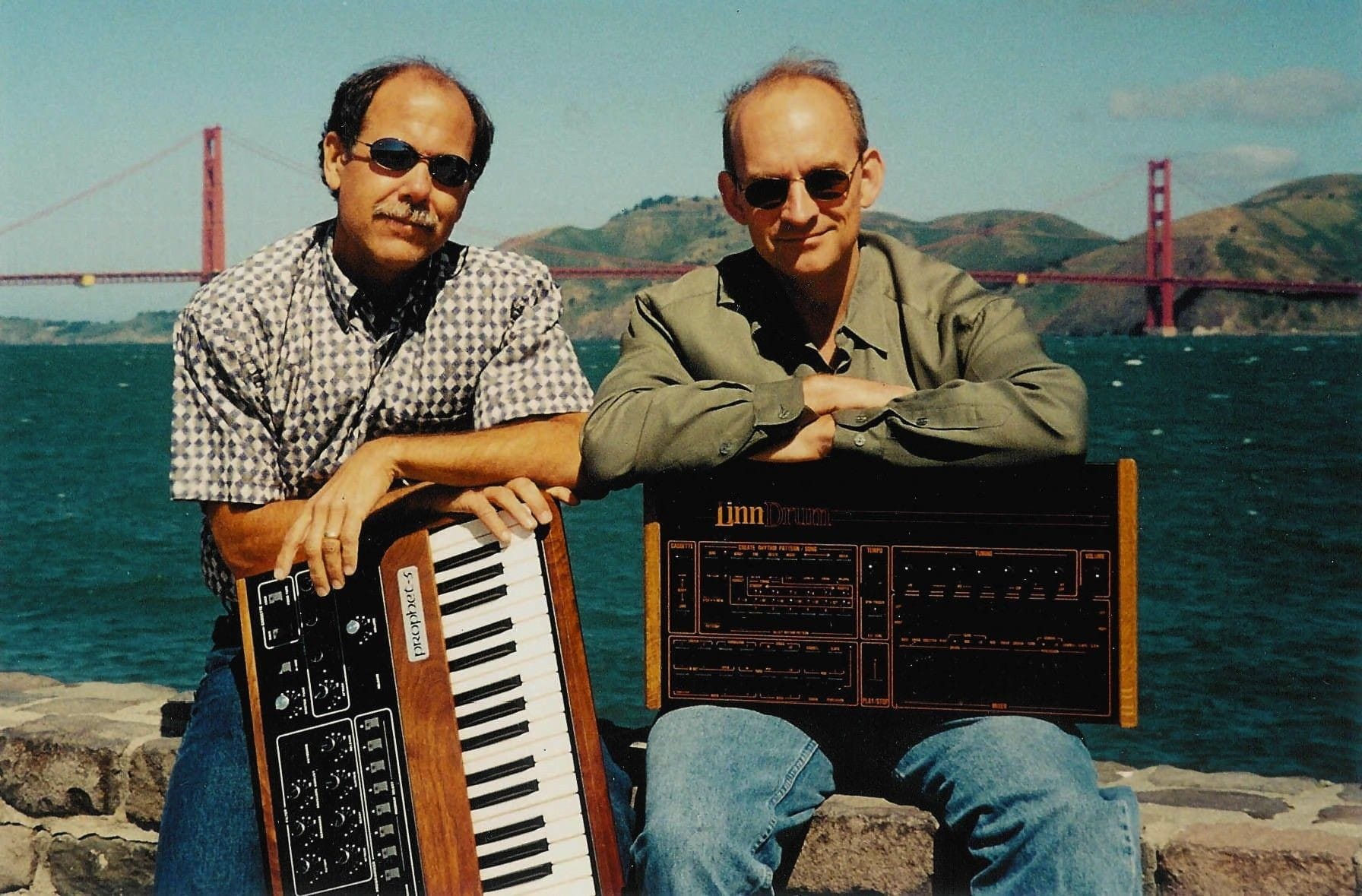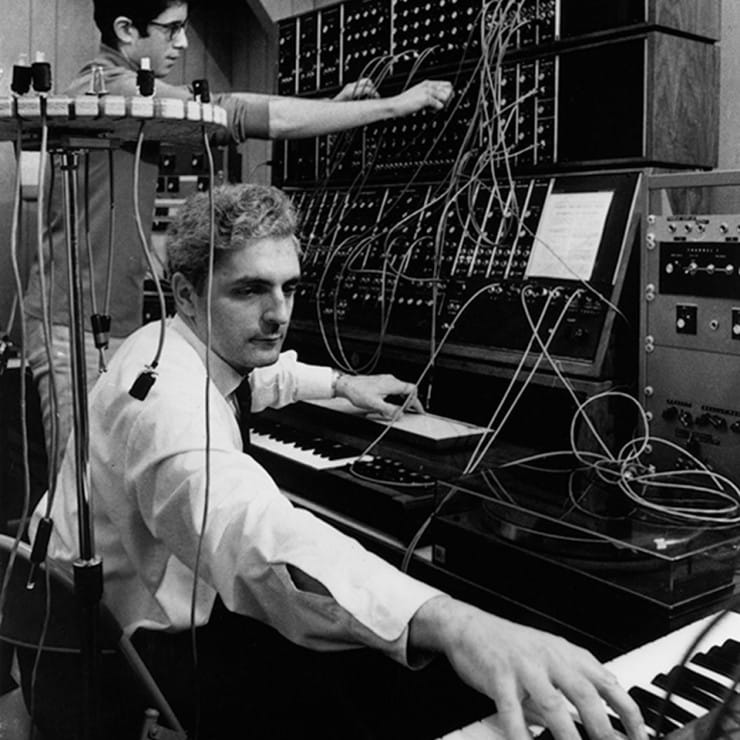Throughout history society has participated in many musical evolutions, from cellos to electric guitars to synthesizers and virtual instruments – we’ve been experimenting and exploring new methods of creating sound. As many aspects of our instruments change, some continue to throw homage to our roots.
Today we’re going to be exploring one of the most popular tools for modern music production: The MIDI Keyboard.
Side note: Be sure to check out our guides on the Understanding MIDI, Best MIDI Keyboard Controllers, as well as our other separate guides for 88-Key MIDI Keyboard Controllers, 49-key MIDI Keyboard Controller, 61-Key MIDI Keyboard Controllers, and 32 & 37-key MIDI Keyboard Controllers, 25-key MIDI Keyboard Controllers.
How Synthesizers Became the New Electric Guitar
In the late 1970’s there was a small explosion in the popularity of synthesizers. Companies like Moog had seemingly perfected their idea of the modular synthesizer – which started showing up in studios, on albums, and in the ears of listeners through pop music for the first time in history.
The synthesizers were great, but their sound and modular properties were limited by the controls, casings, and sequencers they were built into. (1)
This limited the synthesizer’s full potential, and swept them off to studios that could afford to work with the equipment.
Enter Dave Smith – an American engineer and synthesizer guru who purchased Minimoog almost decade prior – in 1977, Dave was working full time at a company he founded himself: Sequential Circuits. (1)
A year later he designed the first polyphonic synth that could store and save it’s own patches: The legendary Prophet 5. Yet the problem still remained, the Prophet too was plagued by its own limitations and sequencers. The leading innovators in synthesizer design and production met, then discussed how the lack of standardization in their individual products was hurting the industry as a whole. Dave Smith goes to work on a solution. (5)

“You could play one keyboard with your right hand and another keyboard with your left hand,” Dave Smith was quoted, “But [musicians] couldn’t play more than one at the same time because there was no way of electrically interconnecting them.” (4)
It’s 1981 and Dave had devised plans to bypass this problem by allowing synthesizers to send and receive information and data from outside sources, namely computers and other musical equipment like samplers and workstations. His attempt at standardization was means to bring synthesizers to the common man by simplifying their use and accessibility across the board. Later, Rob Moog announced the new MIDI (Musical Instrument Digital Interface) standardization. (5) This was a groundbreaking moment, now the synthesizers could send and receive pitch, velocity, tempo data and more – allowing for easier use in studios, and seemingly most noteworthy – cross use of different hardware, as well asnote editing and signaling from DAWs (Digital Audio Workstations) and other digital studios. (5)
MIDI caused an even greater explosion of synthesizers being used and distributed all over the world, and is directly attributed to reving the whole of the music industry in the mid and late 1980s. (5)
Most noteworthy of all, MIDI was released as a form of open-source content – a free gift to the world, for all of us to utilize to further our musical cabapilities. (4) This created for the first time in history – home studios. Now with a few pieces of gear synced together with MIDI – aspiring musicians and producers could splice samples, MIDI data and drum machines together to create sounds previously unheard. (4)

Exploring MIDIs Many Functions on our Modern Music World
The concept of MIDI doesn’t sound strange to us, as we’ve been neck deep in it for over 30 years. But we as modern day musicians can often overlook the important impact it has left on our culture.
Before 1983, there was no standardization. Synthesizers could produce noise, but they couldn’t relay information to other sources or communicate with each other. Their sequencers were limited to what was built into the synthesizer creating seemingly obvious, albeit problematic limitations to the musicians using them. This led to a slow start in the cross pollination of synthesis and pop music. (5) Composers and musicians found it difficult to harness the full potentiality of their tools due to the inability to use two synthesizers at once without the worry of desyncing their sounds and moving out of time with eachother. (4)
Once MIDI was released it became the standard for all synthesizers to be equipped with the design. The ability to orchestrate a vast arsenal of electronic equipment has changed the soundscape of contemporary music forever. 30 years later, and we’re using the same technology to send information from physical keyboards to powerful virtual instruments and soft-synthesizers loaded in our DAW of choice. (4,5)
“The computers were fast enough to be able to sequence notes, control the number of keyboards and drum machines at the same time… it kind of opened up a whole new industry.” Dave Smith was quoted in reference to MIDIs ability to work with DAWs and other computer softwares. (4)
Bringing us back up to speed in 2018, there’s a budding community of musicians hailing from all over the world – now with the power of a recording studio (and more) in their bedrooms. Thanks to DAWs like Ableton, FL Studio and Logic (to name a few) the accessibility of the tools needed to master the craft of audio production and songwriting has never been higher.
A staple in any studio from a world renowned recording studios – to your friend’s mom’s basement: the MIDI keyboard.
Undercuts to the Analog Market
Do to the large price factor of traditional synthesizers, during the mid-to-late 90’s the market started flooding with emulations of the all classics, brand-new synthesis designs and audio effects like compressors and EQs – all in the medium of a new technology: Virtual Studio Technology (VST). (3)
VSTs bridged the gap between professional audio design and home studios. The price factor of a quality synthesizer was now cut by an upwards 90% and many musicians found it more practical to have an array of VSTs on their computer versus having a room full of expensive analog equipment. (3)
Thanks to MIDI and the general rollout of DAWs in the last 25 years there is more music being created today – from every corner of the world than there has ever been before. (6)
Although synthesizers were the initial purpose for which MIDI was created, most MIDI keyboards currently are not considered synthesizers due to the majority of the keyboards only offering MIDI output, with no preloaded sounds. Generally, MIDI keyboards contain anywhere from 1 to 6 octaves laid out like a piano is. They are usually designed with a USB cable which is then connected to a computer running a DAW.
Without the need for oscillators, filters and other sound generating and manipulating features – MIDI keyboards are lightweight, inexpensive and easy to find both new and used. This drastically cut the cost of working with MIDI. Modern music editing and composing programs come with their own software synthesizers and sound banks, not to mention the vast array of software synths ranging from analog emulations to experimental and unorthodox productions are all across the internet.
MIDI has led birth to many new genres of music being created, pushed, and broken in the past few decades. Just as hip-hop opened up the musical world for a community that didn’t have access, MIDI directly birthed a creative revolution – leading to accessibility in the industry like never before.
- Genres like hip-hop relied on MIDI data in thier much used samplers such as the E-Mu Systems SP-12 and keyboards like the Casio SK-1.(9)
- Genres like synth-pop and disco would have never of been possible without MIDI’s role in some of the flagship synthesizers in the 1980s such as the Roland D-50 or their world renowned Jupiter 8. (8)
- The majority of electronic music today would not exist if it wasn’t for the boom of synthesizers in the 80s, and the for use and standardization of midi in most electronic music equipment. (5)
Why MIDI is Here to Stay:
In closing, the history of the keyboard itself goes back to the greek ages where large water organs were used, and throughout history keys have been at the forefront of popular music. (7) They have scales laid out in easy to read patterns, they’re tactile and they can converse a diverse array of emotion due their large range of notes and octaves. Their versatility directly contributed to piano roles becoming the standard for MIDI related softwares and DAWs in comparison to formal sheet music. The accessibility of a piano roll lends a helping hand in creating an easy front to play not only piano and synthesizers through the keyboard, but to also allow the keys to act as a series of buttons, programmable to play anything from drum kits to record samples and foley.
Take the ease and playability of a piano or synthesizer and let it power any soft synth on the market – this is the MIDI keyboard. Commonly found without sound banks of their own – MIDI keyboards are an extension of our vast musical history. Mixing contemporary concepts of software synthesizers with the tried and true layout of the the keyboard’s scales, the MIDI keyboard became the perfect tool to aid both newcomers and seasoned musicians.
No longer must you purchase multi-thousand dollar synthesizers to achieve a professional sound. Now you can load up a multi oscillator software synthesizer and play it, just as you would a Moog, or Prophet with a keyboard that only sets you back a few hundred dollars.
Sources:
- https://en.wikipedia.org/wiki/Dave_Smith_(engineer)
- https://en.wikipedia.org/wiki/Sequential_Circuits_Prophet-5
- https://en.wikipedia.org/wiki/Virtual_Studio_Technology
- https://www.bbc.com/news/technology-20425376
- https://en.wikipedia.org/wiki/MIDI/
- http://money.futureofmusic.org/how-many-musicians-are-there/
- https://en.wikipedia.org/wiki/Keyboard_instrument
- https://www.musicradar.com/news/tech/10-synths-that-defined-the-80s-213447
- http://www.factmag.com/2016/09/15/15-samplers-that-shaped-modern-music/
- http://www.thesynthesizersympathizer.com/2011/10/dave-smith-interview-we-talk-tempest.html
- http://urbanologymag.com/celebrating-the-legacy-of-dr-robert-moog-in-music/
Philip had the founding vision for Audio Assemble, previously known as Pro Tools Tutorial. In 2008 Philip began recording and producing songs and had a hard time finding free and accurate information on Pro Tools software. From there the website was born. Philip currently works as a Software Engineer for Amazon and handles the editorial strategy as well as much of the technical aspects of Audio Assemble’s website.